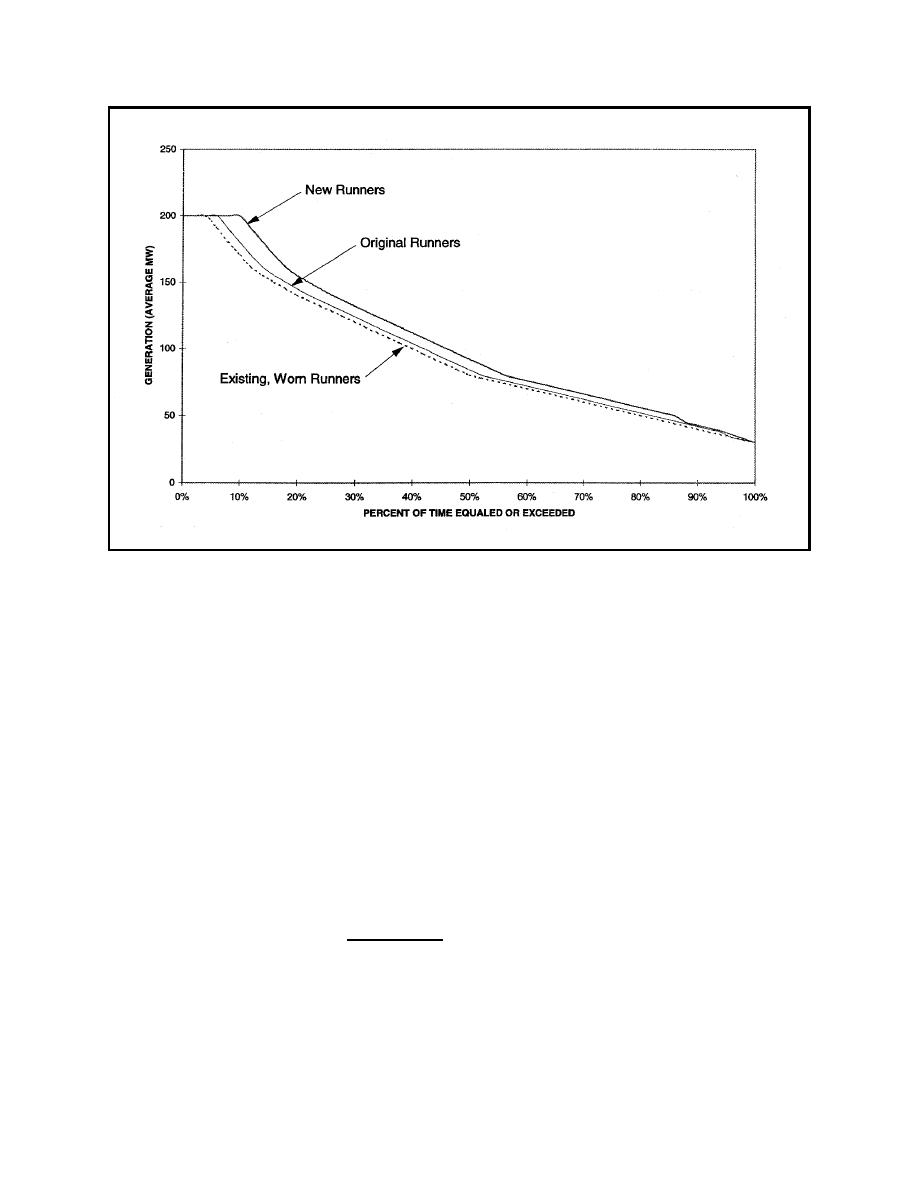
ETL 1110-2-550
30 May 97
Figure D-2. Energy gain, replacing runners
new runners are in place and the capacity of the
curve on Figure D-2 rather than the upper curve.
generators can be increased to match the full output
The gain in energy for this scenario would be
of the new runners. As a result, the capacity of the
4,000 MWh instead of 16,000 Mwh.
plant is increased to (4 units 60 MW) = 240 MW.
D-8. Energy Gained by Improved
b. The upper limit (which truncates the
Availability
duration curve) is increased from 200 MW to
240 MW, so the generation-duration curve was
a. The major rehabilitation guidance
extended to the new upper limit. The upper hatched
area on Figure D-3 defines the gain in energy output
prescribes the approach to evaluating the unit
realized from adding a generator rewind to turbine
availability. Major elements in this analysis are the
runner replacement.
assumptions that are used to define the base
condition, or the "without major rehabilitation"
Energy output with existing
condition. The base condition assumes that the
generators
845,000 MWh
project will be operated in the most efficient manner
Energy output with generator
possible without the proposed rehabilitation.
rewind
861,000 MWh
Should the project experience unsatisfactory
Gain in energy output
16,000 MWh
performance (e.g., a hydroelectric power unit
outage), it is assumed that emergency funds will be
Note that a gain in generation could also be realized
available to fix the feature. The timing, frequency,
by rewinding the generators but retaining the
and consequences of system disruptions are all
existing turbines. The upper hatched area would be
unknown and must be estimated for both the with
smaller, being defined by an extension of the lower
and without project conditions.
D-4



 Previous Page
Previous Page
